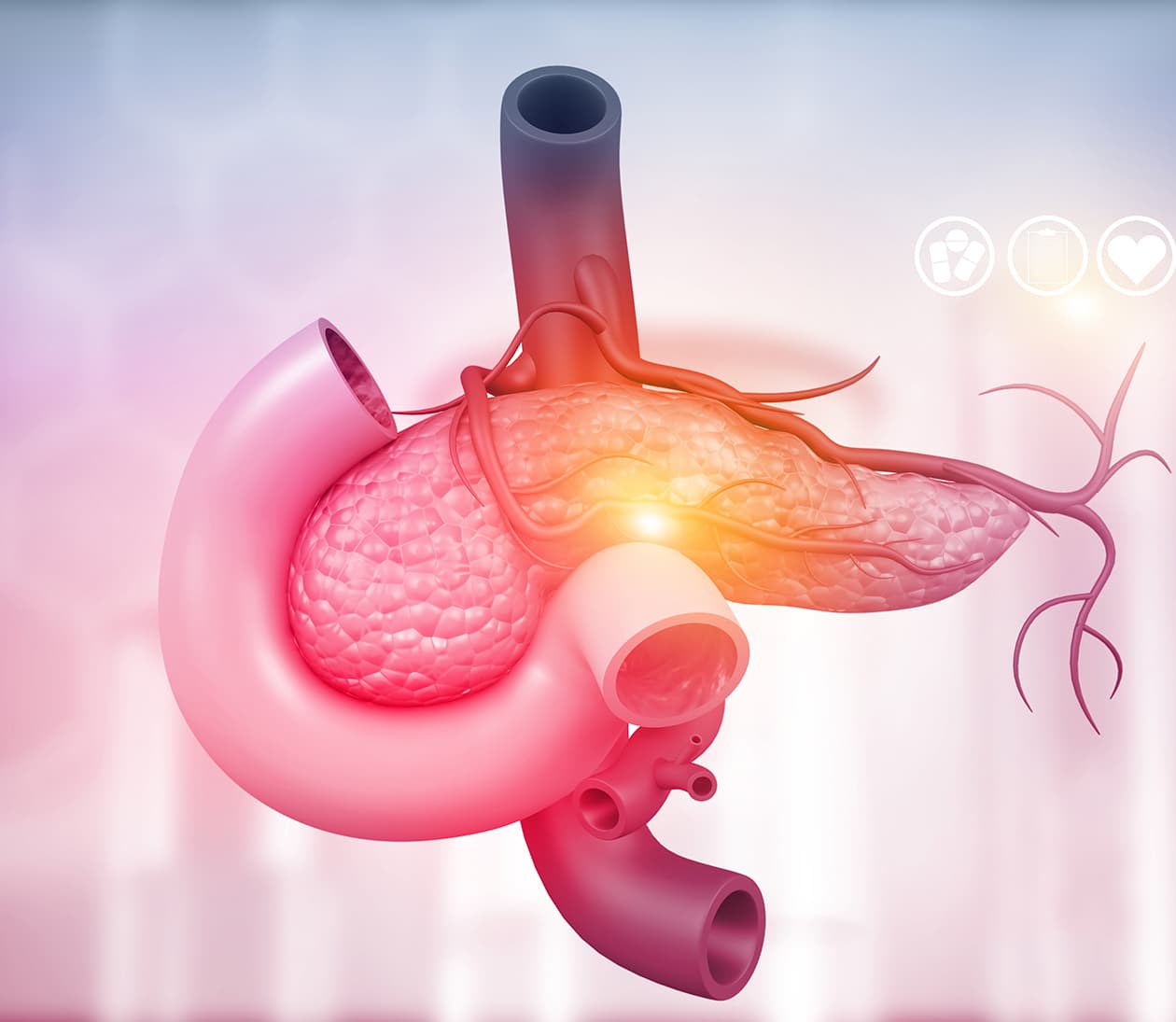
The Pancreatic and Biliary Cancer Program at Cleveland Clinic Abu Dhabi offers state-of-the-art facilities and medical care to patients diagnosed with pancreatic or bile duct cancer and other pancreatic diseases. Using the most sophisticated diagnostic testing and imaging, with advanced endoscopic and interventional radiology support, and the latest robotic and minimally invasive surgical options, our team work together to provide a care plan that is individualized for each patient.
Pancreatic diseases and related disorders are on the rise in the Middle East. Pancreatic cancer is a disease which starts in the ductal cells of the pancreas and forms a cancerous tumor. In addition to cancer, there also are many types of benign (non-cancerous) tumors that can develop. Symptoms of pancreatic cancer do not usually present until the disease is advanced when unfortunately, treatment options are limited. Biliary or bile duct cancer is a rare disease in which cancerous cells form in the bile ducts.

We take a truly multidisciplinary approach to cancer care. Our entire team, including pancreatic surgeons, medical oncologists, gastroenterologists, radiologists, radiation oncologists, anesthesiologists, pain management specialists and psychologists, unite together to develop the best treatment plans for our patients, with a compassionate focus to prolong life expectancy and improve their quality of life.
We provide the complete spectrum of surgical, endoscopic and oncologic treatments for pancreatic and biliary tumors. We also perform minimally invasive pancreatic and biliary resections with the latest laparoscopic and robotic approaches to reduce the length of stay in the hospital and promote a quicker return to a normal life. For patients who require a transplant following diagnosis with pancreatic or biliary cancer, Cleveland Clinic Abu Dhabi’s Pancreas Transplant Program offers local, trusted and experienced care. As the UAE’s first and only multi-organ transplant center, our facility performs cutting-edge, life-changing surgeries. All patients receive compassionate care, extended support and counseling to ensure the most successful medical outcome is achieved.

The pancreas is a small gland behind the stomach which aids food digestion and regulates blood sugar levels in the body by producing the hormones insulin and glucagon. Bile ducts are the thin tubes which carry bile from the liver and gallbladder to the small intestine, which help you digest food.
The Pancreatic and Biliary Cancer Program treats the following types of cancer:

Most pancreatic cancers (over 90%) are called adenocarcinoma and are caused by exocrine tumors, which begin in the ducts of the pancreas. The remaining pancreatic tumors are called neuroendocrine tumors (NETs), or pancreatic NETs (PNETs).
Biliary or bile duct cancer can occur outside of the liver in the ducts as they leave the liver (extrahepatic cholangiocarcinoma), in the bile ducts inside the liver (intrahepatic cholangiocarcinoma) or inside the gallbladder (gallbladder cancer).
Unfortunately, most people don’t experience any symptoms of pancreatic cancer or bile duct cancer in the early stages. As the disease progresses, symptoms may include:
Doctors don’t know what causes pancreatic cancer, but they do know that certain risk factors may put you at greater risk. These include:
The symptoms for bile duct cancer also include smoking, obesity, diabetes, and exposure to certain toxins, but also include:

It is usually difficult to detect pancreatic cancer in the early stages, as the organs cannot be felt by doctors in an exam. If cancer is suspected, imaging tests are ordered which take pictures of the internal organs and an endoscopic ultrasound can also be performed. This involves passing a thin tube with a camera into the stomach via the mouth, so the pancreas can be viewed, and an ultrasound-guided biopsy taken if necessary. A blood test may also be performed to look for a substance called carbohydrate antigen (CA) 19-9, a protein released by pancreatic cancer cells and known as a tumor marker.
Diagnosing bile duct cancer usually involves:
Treatment for pancreatic and bile duct cancer will depend on many things, including the tumor’s location, which stage it is, your overall health and whether it has spread.
Treatment options include:

As doctors don’t know what causes pancreatic and bile duct cancer, there is no way to prevent them. However, there are things you can do to reduce your risk of developing the diseases:
Pancreatic Cancer
Bile Duct Cancer

Caregivers supporting the Pancreatic and Biliary Cancer Program include:

Speak with our Contact Center for assistance
Request an Appointment 800 8 2223 International Patients